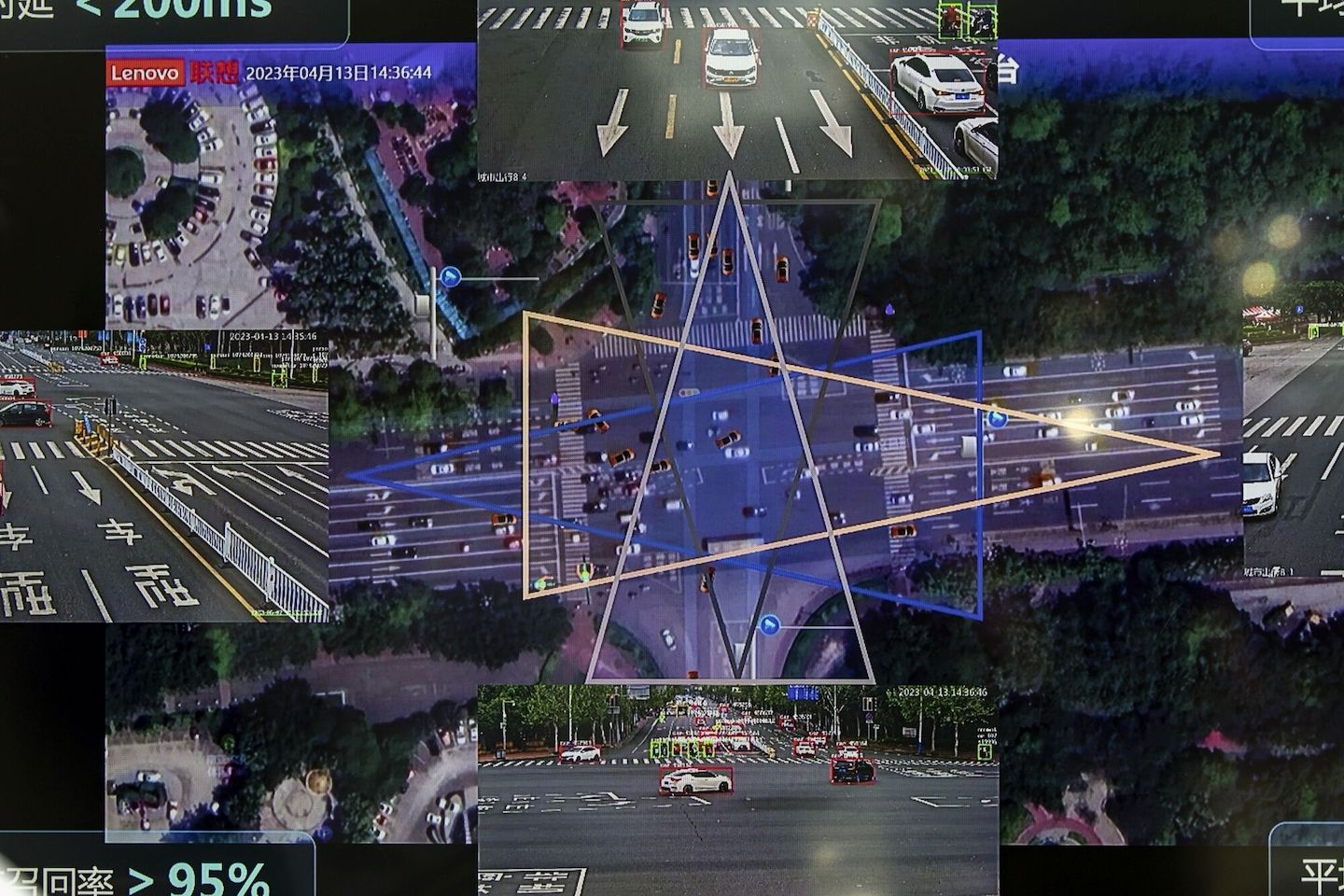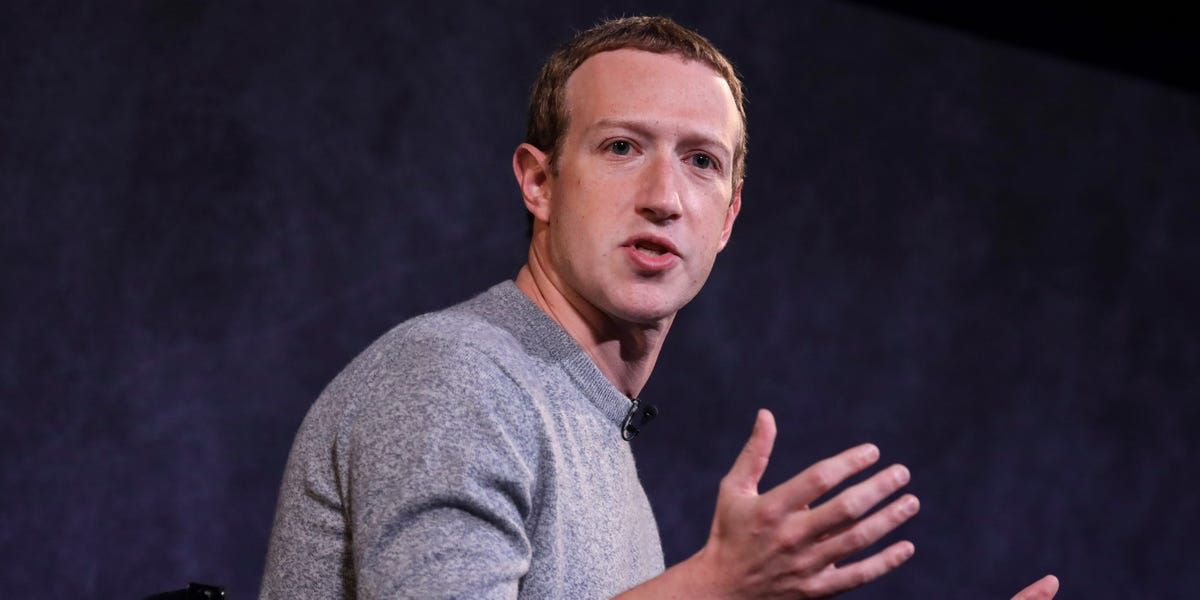Will China overtake the U.S. on AI? Probably not. Here’s why.
Listen 7 min Comment on this story Comment Gift Article Share
The heated technological competition between the United States and China has expanded into a new sphere this year, as popular artificial intelligence tools like ChatGPT have made AI a part of everyday life. Are you on Telegram? Subscribe to our channel for the latest updates on Russia’s war in Ukraine. ArrowRight From chatbots to autonomous driving, the world’s two biggest economies are now racing to develop the most cutting-edge AI technologies.
China’s AI development lags far behind its Western counterparts in many sectors, analysts say. But there is one area where Beijing has gotten ahead of Washington, and that’s putting regulations on the AI industry.
Chinese authorities have been so proactive about regulating some uses of AI, especially those that allow the general public to create their own content, that compliance has become a major hurdle for the country’s companies.
Some Chinese companies have gone as far as making their own rules. Douyin, the Chinese version of TikTok, requires AI-generated content to be labeled and anyone posting on the platform to register their real identity.
Advertisement
As the use of AI explodes, regulators in Washington and around the world are trying to figure out how to manage potential threats to privacy, employment, intellectual property and even human existence itself.
Senate Majority Leader Charles E. Schumer (D-N.Y.) last month urged Congress to adopt “comprehensive” regulations on the AI industry.
But there are also concerns that putting any guardrails on the technology in the United States would surrender leadership in the sector to Chinese companies.
Here’s a rundown of China’s priorities when it comes to AI, and how Beijing is regulating this new technology.
First of all, where is China’s AI industry at?
Chinese companies have been investing in AI for years — from lining city streets with surveillance cameras to using facial recognition to monitor paper use in public toilets — and have long been at the cutting edge of surveillance technology.
Advertisement
But when it comes to some other types of AI, Chinese firms lag years behind their international peers.
That’s partly because the Chinese Communist Party-run government strictly controls information and communication.
Rather than focusing on AI technology that lets the general public create unique content like the chatbots and image generators, Chinese companies have instead focused on technologies with clear commercial uses, like surveillance tech.
As a result, in other areas of AI, such as the large language models that underpin chatbots, Chinese companies have largely had to build on models developed outside of China.
“A lot of Chinese companies have less funding and less leeway to invest in foundational AI development, so oftentimes, they have to follow whatever trajectory has been opened up by U.S. companies,” said Jeff Ding, assistant professor of political science at George Washington University, who focuses on AI competition between the United States and China.
If Washington regulates AI, won’t that help Chinese companies get ahead?
In a recent study, Ding found that most of the large language models developed in China were nearly two years behind those developed in the U.S., a gap that would be a challenge to close — even if American firms had to adjust to regulation.
This gap also makes it difficult for Chinese firms to attract the world’s top engineering talent. Many would prefer to work at firms that have the resources and flexibility to experiment on frontier research areas.
Restrictions on access to the most advanced chips, which are needed to run AI models, have added to these difficulties.
Advertisement
Experts say that while lawmakers in Washington debate how to regulate AI in a way that limits potential harms, they have the chance to pull off what Beijing hasn’t: finding a way to put guardrails on the tech without constraining its future development.
How has China’s AI development been affected by U.S. restrictions on access to cutting-edge chips?
Late last year, the Biden administration restricted the sale to China of certain chips made anywhere in the world with U.S. equipment. Washington said the move was necessary to prevent U.S. tech from being used in Chinese military applications or making its way to Russia.
This has made it harder for Chinese tech companies to access the most advanced chips that run complex AI frameworks. Beijing has called the measures abuses intended to reinforce the U.S. “technological hegemony.”
Recent research identified 17 large language models in China that relied on Nvidia chips, and just three models that used Chinese-made chips.
Advertisement
While Beijing pushes to make comparable chips at home, Chinese AI companies have to source their chips any way they can — including from a black market that has sprung up in Shenzhen, where, according to Reuters, the most advanced Nvidia chips sell for nearly $20,000, more than twice what they go for elsewhere.
What are China’s priorities and biggest advancements in AI?
Despite the obstacles, Chinese AI companies have made major advances in some types of AI technologies, including facial recognition, gait recognition, and artificial and virtual reality.
These technologies have also fueled the development of China’s vast surveillance industry, giving Chinese tech giants an edge that they market around the world, such as Huawei’s contracts for smart city surveillance from Belgrade, Serbia, to Nairobi.
Tech companies in the United States and other democratic countries have been less invested in developing this side of AI, said Helen Toner, director of strategy at Georgetown University’s Center for Security and Emerging Technology.
Advertisement
“Whereas in China, the government threw open the door and told companies ‘Please have access to our giant facial recognition data sets; let’s push ahead as fast as we can,’” she said.
While Chinese tech firms doubled down on developing this kind of AI, American companies were developing tech such as chatbots designed to entertain and put creative tools in the hands of the public.
How is China approaching regulation of its AI industry?
Beijing’s approach to regulating AI has constrained Chinese firms’ ability to innovate, analysts and industry insiders say.
Companies developing AI in China need to comply with specific laws on intellectual property rights, personal information protection, recommendation algorithms and synthetic content, also called deep fakes. In April, regulators also released a draft set of rules on generative AI, the technology behind image generator Stable Diffusion and chatbots such as OpenAI’s ChatGPT and Google’s Bard.
They also need to ensure AI generated content complies with Beijing’s strict censorship regime. Chinese tech companies such as Baidu have become adept at filtering content that contravenes these rules. But it has hampered their ability to test the limits of what AI can do.
Advertisement
“You can say many things about Chinese AI developers — but one thing you can’t say is that they can build whatever they want,” Toner said.
No Chinese tech company has yet been able to release a large language model on the scale of OpenAI’s ChatGPT to the general public, in which the company has asked the public to play with and test a generative AI model, said Ding, the professor at George Washington University.
“That level of freedom has not been allowed in China, in part because the Chinese government is very worried about people creating politically sensitive content,” Ding said.
Can Washington learn anything from how Beijing has approached AI regulation?
Although Beijing’s regulations have created major burdens for Chinese AI companies, analysts say that they contain several key principles that Washington can learn from — like protecting personal information, labeling AI-generated content and alerting the government if an AI develops dangerous capabilities.
Advertisement
AI regulation in the United States could easily fall short of Beijing’s heavy-handed approach while still preventing discrimination, protecting people’s rights and adhering to existing laws, said Johanna Costigan, a research associate at the Asia Society Policy Institute.
“There can be alignment between regulation and innovation,” Costigan said. “But it’s a question of rising to the occasion of what this moment represents — do we care enough to protect people who are using this technology? Because people are using it whether the government regulates it or not.”
Gift this article Gift Article
Source: The Washington Post


